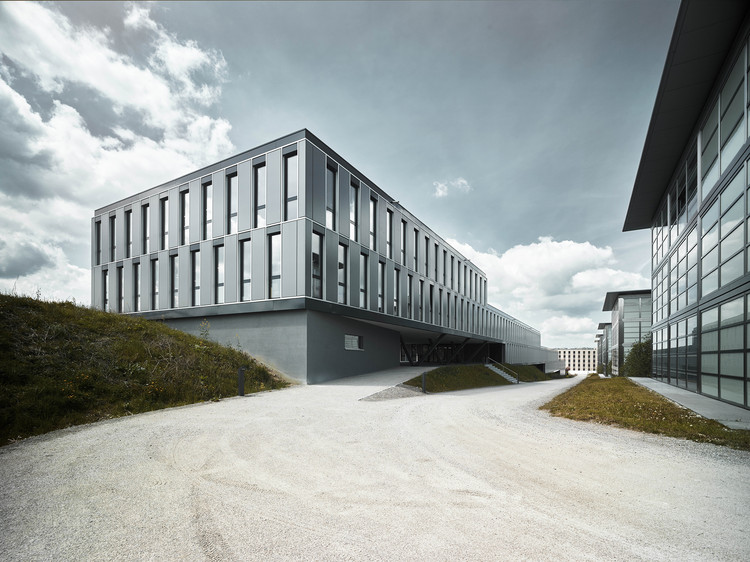
- Year: 2016
-
Photographs:Valentin Jeck

Text description provided by the architects. All the client initially asked for was a temporary, off-the-shelf solution to an acute lack of space. But sometimes the least promising of circumstances can give rise to architecture that is truly compelling, from both a financial and a design perspective. At least that’s what Züst Gübeli Gambetti thought upon reading the ETH Zurich’s competition brief. To the young firm, the proposed program seemed to be a quick fix, the opposite of a sustainable solution. Yet they were drawn to the idea of contributing their own progressive architectural statement to the Hönggerberg—Zurich’s Mt. Olympus of architecture. Now their winning proposal stands on that very site, three times as large and three times as solid as the container village original- ly anticipated by the client. Moreover, for its size, it is the most cost- effective structure ever built by the university.





























